Information
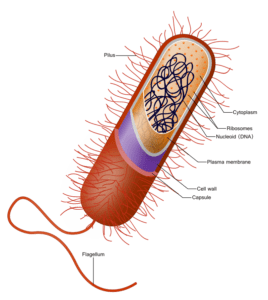
Typical bacteria – By This vector image is completely made by Ali Zifan – Own work; used information from Biology 10e Textbook (chapter 4, Pg: 63) by: Peter Raven, Kenneth Mason, Jonathan Losos, Susan Singer · McGraw-Hill Education., CC BY-SA 4.0, Link
Information and Life
All life on earth is made from organic molecules.
An organic compound is any chemical compound containing carbon-hydrogen bonds. The propensity for carbon to form chains and complex structures means there are millions of organic molecules possible.
Only a minuscule portion of the possible organic molecules possible are used in all life; these are referred to a life organic molecules. Examples of these would be glucose or simple sugar, and proteins which are chains of other organic molecules called amino acids.
Biology textbooks frequently suggest that given enough time under the right condition, the right organic molecules can evolve into the building blocks of life. Eventually, these building blocks will self=assemble into early life which will eventually evolve into people.
The assertion in this scenario is that life will emerge through purely natural processes without any intelligent intervention or creative act. Put another way, the central claim of biology is that life is almost inevitable given the right circumstances.
There is nothing more involved than just the simple laws of chemistry and physics – there is no need for any intelligent intervention. The random distribution of molecules and chemical reactions over time and space of the huge universe will eventually produce the building blocks of life which will then self-assemble into life itself.
The whole idea that life arose from non-life at least once in the history of the universe is the concept known as abiogenesis.
It is obviously impossible for any scientist to travel back in time to personally examine the creation of life. The scientist must infer from what we can evaluate now about conditions that were present early in earth’s history, and then determine a likely scenario for how life began. This is the same type of evaluative process that occurs in other sciences such as paleontology, archaeology, or even forensic medicine.
We can evaluate the most likely circumstances concerning a remote event from the information that we currently have about that event. Chemists have learned a lot about chemical reactions and how they form new molecules, and then how these molecules are destroyed over time. It is from this knowledge that basic assumptions can be made concerning the origin of life.
Assumptions
The central assumption of abiogenesis is that it must be true; even if our current understanding of biology is unable to explain how life could originate through purely natural causes, some purely natural cause must have caused it. The only problem is to determine that natural cause – there is no room for a metaphysical cause and certainly no concept of intelligent design (or a Designer).
To the casual observer, it would seem self-evident that science should follow any evidence wherever it might lead. After all, science is all about the discovery of truth – or at least what most likely explains the phenomenon being evaluated.
But this is not the case at all. Modern science is by definition not interested in any explanations that are not physical; they by definition refuse any metaphysical explanation. Even though our understanding concerning the origin of life is not complete and filled with many seemingly insurmountable problems, there is no possibility of a metaphysical or theological explanation.
The central dogma of modern science is that everything physical can be explained by a physical explanation. To this end, origin-of-life scientists insist on only considering physical explanations for physical life. Scientists insist they are only following the evidence, while purposefully denying any metaphysical origins. This refusal to acknowledge a metaphysical origin of life has led to some embarrassing moments in the history of science
Spontaneous Generation
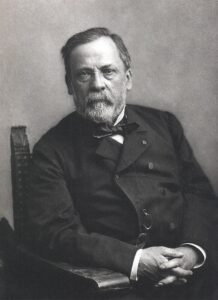
Louis Pasteur – By Paul Nadar – File:Louis Pasteur, foto av Paul Nadar.jpg, Public Domain, Link
Observers of nature from the earliest civilizations until now have pondered the origin of life. Maggots seem to appear spontaneously in rotten meat or a decaying corpse and science deemed that such creatures arose spontaneously. This seemed to be borne out by simple observation and was a “truth” taken for granted for many centuries. The best and brightest scientists for thousands of years believed life could emerge spontaneously from decaying matter – it was considered self-evident – no reputable scientist doubted this obvious “fact” The idea that maggots arose from decaying meat through a process termed “spontaneous generation” was the consensus of scientists great and small.
Until it wasn’t.
This continued until the great French microbiologist Louis Pasteur (1822 – 1895) proved that spontaneous generation was a myth. The wine industry was particularly important to the French economy, and the spoilage of wine (when the alcohol turned into vinegar) was particularly important. Pasteur performed carefully designed experiments and demonstrated living organisms did not arise spontaneously in the wine. He noted,
Never will the doctrine of spontaneous generation recover from the mortal blow of this simple experiment. There is no known circumstance in which it can be confirmed that microscopic beings came into the world … without parents similar to themselves.
Or so he thought.
We now take it for granted that mice do not arise from stored wheat, or worms from mud, or maggots from rotting meat. Every child now knows that these creatures arise from parents. Today, we are forced with a similar problem that faced Pasteur – where did the first creatures come from – before there were any parents?
Abiogenesis posits that in the remote past soon after the world came into existence, life somehow appeared on earth through some lucky event.
The Pool that Started it All
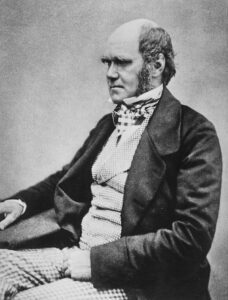
By Charles_Darwin_seated.jpg: Henry Maull (1829–1914) and John Fox (1832–1907) (Maull & Fox) [2]derivative work: Beao – Charles_Darwin_seated.jpg, Public Domain, Link
How life originated from non-life was a complete mystery to Charles Darwin – as it is today. Darwin knew about the experiments of Pasteur, yet proposed there must have been a time – maybe just once – in the remote past when Pasteur was wrong.
While Darwin did not directly address the origin of life in his original work, On the Origin of Species, he assumed one or more original organisms came into existence from which all other life arose. However, he held out hope for a purely naturalistic explanation for life that would not require a Creator
Darwin asked his friend Joseph Hooker in an 1871 letter,
How on earth is the absence of all living things in Pasteur’s experiment to be accounted for?
He would then go on to promote a possible solution,
It is often said that all the conditions for the first production of a living organism are now present, which could ever have been present – But if (& oh what a big if) we could conceive in some warm little pond with all sort of ammonia & phosphoric salts, – light, heat, electric, that a protein compound was chemically formed, ready to undergo still more complex changes …
Darwin understood that in the present environment, a “protein compound” would be immediately destroyed or devoured, but maybe in the ancient earth, this would not be the case. Darwin was a biologist and not a chemist. The process whereby chemicals could come together to form life was a complete mystery.
Darwin would not be alone in the effort of naturalist scientists to develop life from shelf chemicals in some remote pond. This would be an ongoing but ultimately futile hope for a means to create life from non-life.
Even with the most sophisticated labs in existence today, organic chemists and molecular biologists are unable to create the simplest bacteria out of shelf chemicals. But it has remained a dream to do so in order to show how a Creator was not needed and how Man was indeed the Master of his fate and the ultimate Captain of his Soul.
Primitive Soup
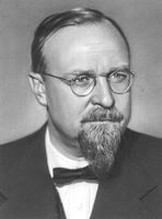
Alexander Oparin
The original Darwin concept of life chemicals arising in primitive ponds gained traction among origin-of-life scientists in the early 20th century. It should be of no surprise that atheistic Communist Russia would favor such a concept. Alexander Oparin embodied these dreams and set about to popularize the concept that simple organic molecules could form from an early Earth atmosphere containing methane, ammonia, hydrogen, and water vapor. Such an atmosphere is known as being “reducing” as opposed to an “oxidizing” atmosphere containing oxygen.
Oparin thought that simple organic molecules could form and would eventually react with each other forming more complex life molecules and eventually life itself. Oparin was then joined by other academic scientists including J.B.S. Haldane who proposed the primitive Earth ocean was like a “hot dilute soup” in which such organic molecules could form.
Many were initially skeptical – it seemed too simple. But with no other obvious naturalistic explanation scientists gradually warmed to the idea of a hot chemical soup in the oceans. If Darwin could posit the evolution of all complex life from a single primitive organism, maybe that primitive organism could itself arise through a kind of chemical evolution. This makes nature the creator – no need for a God.
Then came Stanley Miller and Harold Urey – names present in high school biology books even today.
Miller and Urey – the Spark
The Miller experiment at the University of Chicago “sparked” great interest in the scientific community about the possible production of life from shelf chemicals. The eminent scientist George Simpson noted,
at a recent meeting in Chicago, a highly distinguished international panel of experts was polled. All considered the experimental production of life in the laboratory imment.
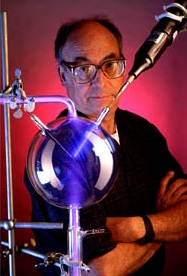
By Unknown author – web99.arc.nasa.gov/~astrochm/Miller/Miller1999.jpg, Public Domain, Link
The Miller experiments used a heat source with water, and electrical discharges in a gas consisting of water, methane, ammonia, and hydrogen to produce organic substances including several amino acids.
The idea, however, that this iconic experiment helps to explain how a purely natural process produced life is simply not true.
In the decades since this experiment, nearly every aspect of the Miller-Urey experiment has been challenged. These challenges concerned the reducing atmosphere used in the experiment (early Earth likely had an oxidizing atmosphere), the need for just the right amount of energy, and the careful isolation of amino acids before interfering chemical reactions degraded them.
The decades following these experiments have shown how difficult it is to actually produce life even from these organic chemicals. Researchers have identified multiple serious problems with the abiogenesis idea that led chemist Charles Thaxton and others to identify a “crisis in the chemistry of origins. They noted,
the undirected flow of energy through a primordial atmosphere and ocean is at present a woefully inadequate explanation for the incredible complexity associated with even simple living systems, and is probably wrong.
The problem gets even worse; as science understands more and more about the molecular biology of life, layers upon layers of complexity are revealed. Rather than revealing a pathway toward understanding naturalistic life origins, greater research has instead shown the solution – if there is one – to be vastly more complex than previously imagined.
The early days of excitement after the original Miller and Urey experiments in 1952 have now dissipated, replaced by an understanding that a natural explanation may forever remain out of reach. One of the reasons why the early enthusiasm ran into a brick wall would come the next year in 1953 when two English scientists figured out the secret of life – DNA
Deoxyribonucleic Acid – the Information of Life
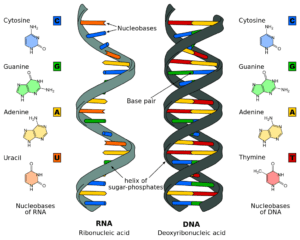
RNA and DNA Comparison: By File:Difference DNA RNA-DE.svg: Sponk / *translation: Sponk – Chemical structures of nucleobases by Roland1952, CC BY-SA 3.0, Link
Crick had a remarkable premonition concerning DNA that it was the code of life itself. He expressed his excitement in a hand-written letter to his 12-year-old son Michael on March 19, 1953. Concerning DNA,
It is like a code. If you are given one set of letters you can write down the others.
Now we believe that the DNA is a code. That is, the order of the bases (the letters) makes on gene different from another gene (just as one page of print is different from another) …
In other words, we think we have found the basic copying mechanism by which life comes from life. … You can understand that we are very excited. We have to have a letter off to Nature in a day or so. Read this carefully so that you understand it. When you come home we will show you the model.
Crick would come to understand that it was not just the physical nature of DMA or its chemical makeup that stored information, but the arrangement of these nucleotide bases that codes for amino acids that are used to make proteins. Just like the letters of the English alphabet relays information, the order of the four DNE bases relays information.
Stephen Meyer noted,
At the close of the nineteenth century, most biologists thought life consisted solely of matter and energy. But after Watson and Crick, biologists came to recognize the importance of a third fundamental entity in living things: information.
The Language of Life
DNA is a vast code filled with biological information. But where did this information come from? This still remains an open question.
Organic life has since been shown to be all about nano-technology consisting of molecular machines, information processing systems, and transport mechanisms, repair routines, and intercommunication processes. As Anderson points out,
DNA is a carefully orchestrated process with a 4-bit code, storage, retrieval, and translation processes, computational protocols, and other hallmarks of a highly functional, information-rich system.
The origin of this code has been the subject of considerable research and conjecture. But we do know that currently, there is no known naturalistic cause that is shown to produce large amounts of new information. Nothing like that has ever been observed – not even once. The search for such a system has involved world-class biologists and scientists for generations with no hint of a solution.

James Tour – By Jeff Fitlow – The uploader on Wikimedia Commons received this from the author/copyright holder., CC BY-SA 4.0, Link
The renowned synthetic organic chemist James Tour has more than 700 research publications and 130 patents to his name and has been involved in origin-of-life research. In a 2019 essay, he penned the frustration felt by scientists trying to find a naturalistic explanation for the origin of this information. He noted,
Why not admit what we cannot yet explain: the mass transfer of starting materials to the molecules needed for life; the origin of life’s code; the combinatorial complexities present in any living system; and the precise nonregular assembly of cellular components?
I have discussed these issues with [origin of life] researchers and I am amazed that they fail to appreciate the magnitude of the problem in building molecules.
It has become increasingly apparent that chance alone cannot be responsible for the amount of information contained within DNA. In fact, natural processes invariably result in a loss of information – not a production of information. This loss is clearly predicted from mathematical analyses and principles of information theory, and it is confirmed by laboratory research.
Processes that are driven by chance simply do not have the capacity to produce new information-rich systems like those in biology. In fact, living organisms have mechanisms in place such as proofreading and error-correction mechanisms, that are specifically for the detection of errors produced by chance degradation of information.
There is only one thing that is known through common experience to be able to produce an information-rich system – and that is intelligence.
We all have information-rich systems all around us in common experiences that are produced by intelligence. These include smart televisions, computer programs, connected devices, among many others. Not a single one of these systems originated by chance but was engineered by intelligence.
As Meyer notes,
Out uniform experience affirms that specified information – whether inscribed in hieroglyphics, written in a book, encoded in a radio signal, or produced in a simulation experiment – always arises from an intelligent source, from a mind and not a strictly material process. … Indeed, whenever we find specific information and we know the causal story of how that information arose, we always find that it arose from an intelligent source.
This ability to attribute intelligence to these objects is not out of ignorance from not knowing all the possible alternative explanations. It is, however, based upon our common experience of observation and understanding as to how these things are built. We do this through a logical process called “abductive reasoning” even without conscious consideration. Abductive reasoning is “inference to the best explanation” – it is the simplest and most likely conclusion that can reasonably be drawn through observation.
Explanation of Information
The simplest bacteria has within it a code of information that instructs its cellular factory in the production of enzymes, structural proteins, regulatory pathways, corrective algorithms, positive and negative feedback loops, and the ability to connect with the outside world through pores, channels, and special surface proteins.
All of the many naturalistic explanations which have been imaged over the past 70 years to explain the origin of this information system has utterly failed. In fact, what investigation has shown is that such information systems tend to degrade over time through mutations and mistakes, rather than to form new information. None of these explanations can produce what is observed to the molecular biologist – none.
However, we do know of a source that can produce such information – and that is intelligence. Intelligence regularly produces complex information that can be used to build complicated systems – the computer upon which I am now typing is such an example. Unlike any natural explanation, creative intelligence can produce new information and complicated systems. A whole new field of biology called “bioinformatics” is dedicated to the study of information in biological systems – especially in DNA.
But …
Despite all the evidence to the contrary, there are still many origin-of-life researchers who reject the conclusion that there must have been an intelligence behind the information coded within every cell of your body. They dogmatically insist that purely naturalistic, mindless processes will eventually be found to explain the origin of this information – even though there is presently no clue as to how this might have occurred.
One thing that is becoming more clear over time is the fantastic complexity of even the simplest forms of life. Far from being the globs of protoplasm conjectured by Darwin, life is a veritable factory within a factory within a factory ad infinitum.
The first life was not an accident in chemistry in some random pond or a lucky draw of the comic lottery. Rather life was intended, planned, and orchestrated.
Life was design.
Summary of Information
One of the most unanswered questions in biology today is the origin of life. We are no closer to finding a naturalistic explanation of this origin than we were when DNA was first discovered 70 years ago. In many respects, we know much more about the fantastic complexity of life and are much further from such an explanation.
Tour suggested the hopelessness of the current situation among naturalistic biologist when he exclaimed,
Why not admit what we cannot yet explain: the mass transfer of starting materials to the molecules needed for life; the origin of life’s code; the combinatorial complexities present in any living system; and the precise nonregular assembly of cellular components?
Why indeed!

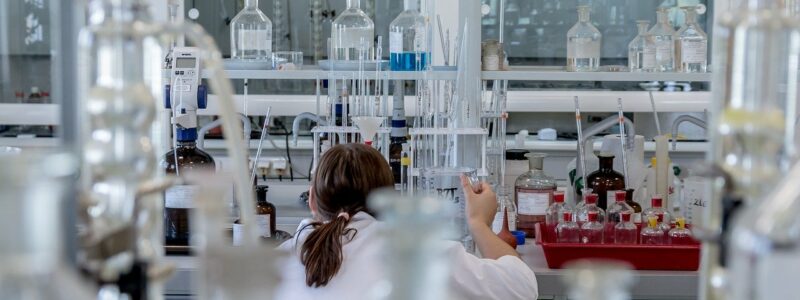
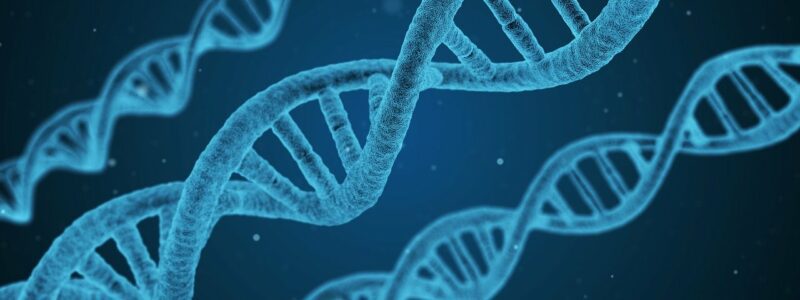
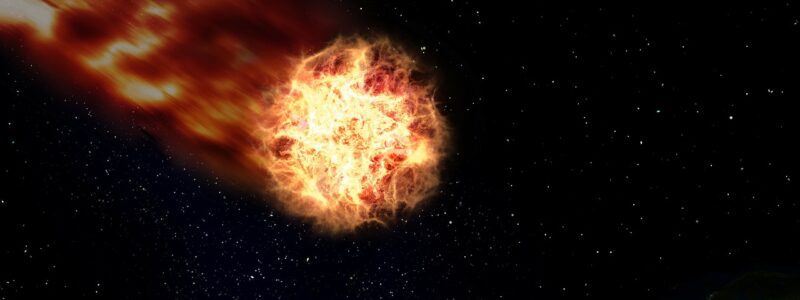
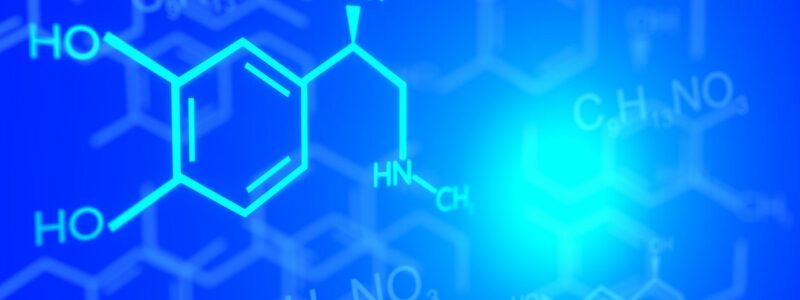
This was an interesting and a mind provoking read ‘ The origin’s of Life’. I think scientist still has a long way to really put their finger on this. I agree with James Tour that Why not admit what we cannot yet explain: the mass transfer of starting materials to the molecules needed for life’ . They should acknowledge that it is beyond them.
Thank you for your comment. Agree that there is much we cannot explain concerning the origin of life and that a bit of humility is in order. Otherwise, it seems as though you have a closed mind not open to all possibilities of explanation.
Thanks for this beautiful piece of information that has to do with biology and biochemistry. It is of great benefit reading this article and getting to know more about life according to biology. I so much love the fact that you added the historical discoveries in biology by all those prominent scientist and biologist who used their discoveries to mould biology into what is it today.
Thank you very much for your comments regarding information biology and its relationship to the origin of life.
Dave.